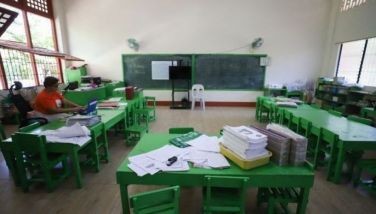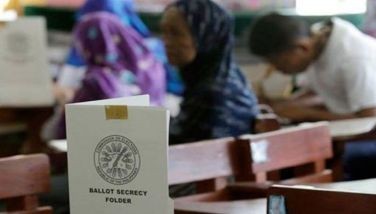DA prepares for more destructive La Niña

MANILA, Philippines — The Department of Agriculture (DA) is preparing for a “more destructive” La Niña even as El Niño continues to affect the agriculture sector.
At a press conference yesterday, Agriculture Assistant Secretary U-Nichols Manalo noted that the DA has started its La Niña preparations by looking into areas severely affected by La Niña in the past.
“For the past 25 years, based on our record, we have had at least eight El Niño, meaning the current El Niño that we are experiencing is the eighth. For La Niña, if ever it will arrive, it will be the 17th. As early as now, we are preparing,” Manalo said.
“You do the math, the damage is bigger for La Niña and it is always on rice, corn and high value crops,” Manalo said.
He added that like with El Niño, they are focusing on the management of water for irrigation during La Niña, when there will be an excess of water.
The DA is currently coordinating with concerned local government agencies and local government units (LGUs) to prepare for the threat of La Niña, he said.
“Again, it follows the original instruction that it will be a whole-of-government approach, not only DA and it is science-based,” Manalo added.
President Marcos on Thursday urged LGUs to brace for the impact of La Niña.
“Be prepared at all times. Let’s be aware of the needs of our constituents and make programs that will definitely help our countrymen,” he added.
Presidential Communications Office Assistant Secretary Joey Villarama also urged LGUs to identify flood-prone areas.
He said Task Force El Niño has been discussing preparations, including the building of water impounding facilities or rain catchment systems in the country.
The Philippine Atmospheric, Geophysical and Astronomical Services Administration (PAGASA) said that La Niña still has a 60 percent chance of developing by June to August this year.
La Niña is characterized by unusually cooler than average sea surface temperature and is associated with above normal rainfall conditions that may bring adverse impacts such as floods and landslides.
The ongoing El Niño continues to weaken, but state climatologists said the hotter and drier conditions still persist with neutral conditions anticipated from April to July.
A transition to the southwest monsoon could also cause rains over the western portion of the country from May to September.
The declaration of the rainy season will be upon the onset of the southwest monsoon.
PAGASA said that for the month of May, one to two tropical cyclones may enter the country and other weather systems could include easterlies, localized thunderstorms, intertropical convergence zone, a low-pressure area and a ridge of a high pressure area.
Below normal rainfall conditions will likely still be experienced in most parts of Luzon and the Visayas.
Meanwhile, more El Niño-hit provinces in Mindanao received cash and other assistance from the government yesterday as areas declaring a state of calamity due to extreme heat and dry conditions now number 276 cities and municipalities.
President Marcos led the distribution of financial assistance to farmers and fisherfolk in Sultan Kudarat, Cotabato and General Santos City.
The President assured affected residents the administration would exhaust all resources to help them recover from the impact of El Niño on their livelihood.
He extended P10,000 from the Office of the President to each affected farmer, fisherfolk and their families along with the P5,000 cash assistance from the DA under the Rice Competitiveness Enhancement Fund-Rice Farmers Financial Assistance. — Romina Cabrera, Helen Flores
- Latest
- Trending





























